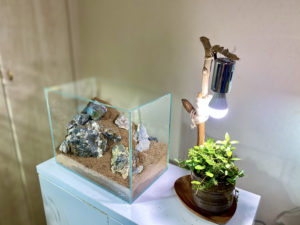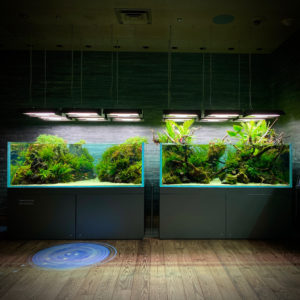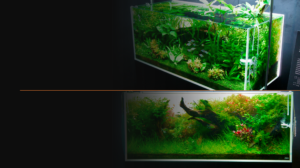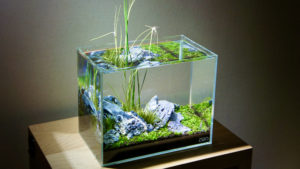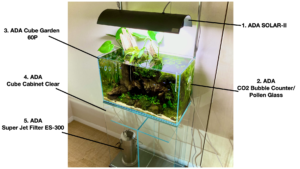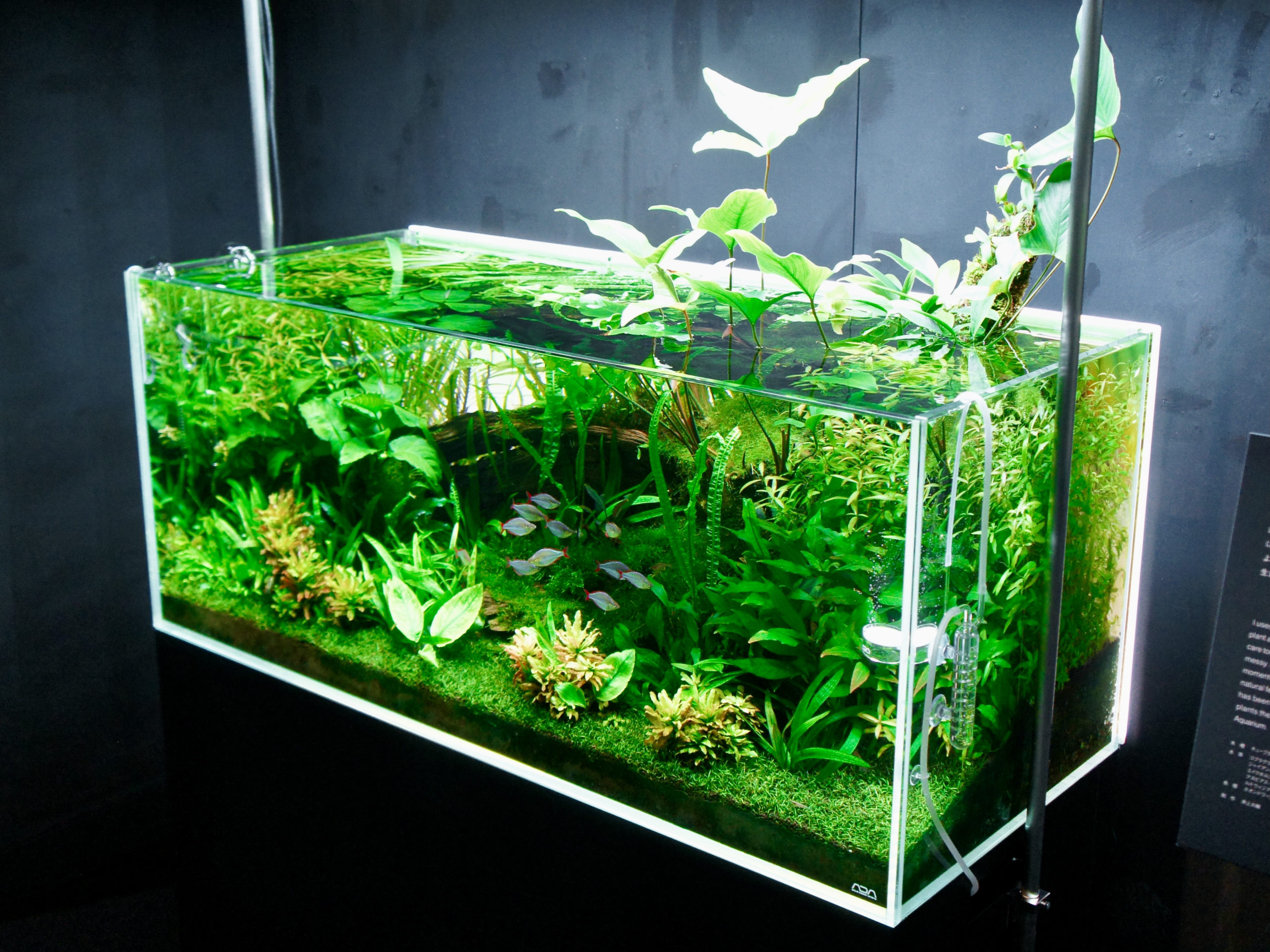
If you are reading this, you must be at least interested in making your own aquascape. If you are a beginner, you are on the right site. We will help you create and maintain your very first Nature Aquarium. Let’s get started!
Contents
Step1. Choose an Aquarium Tank
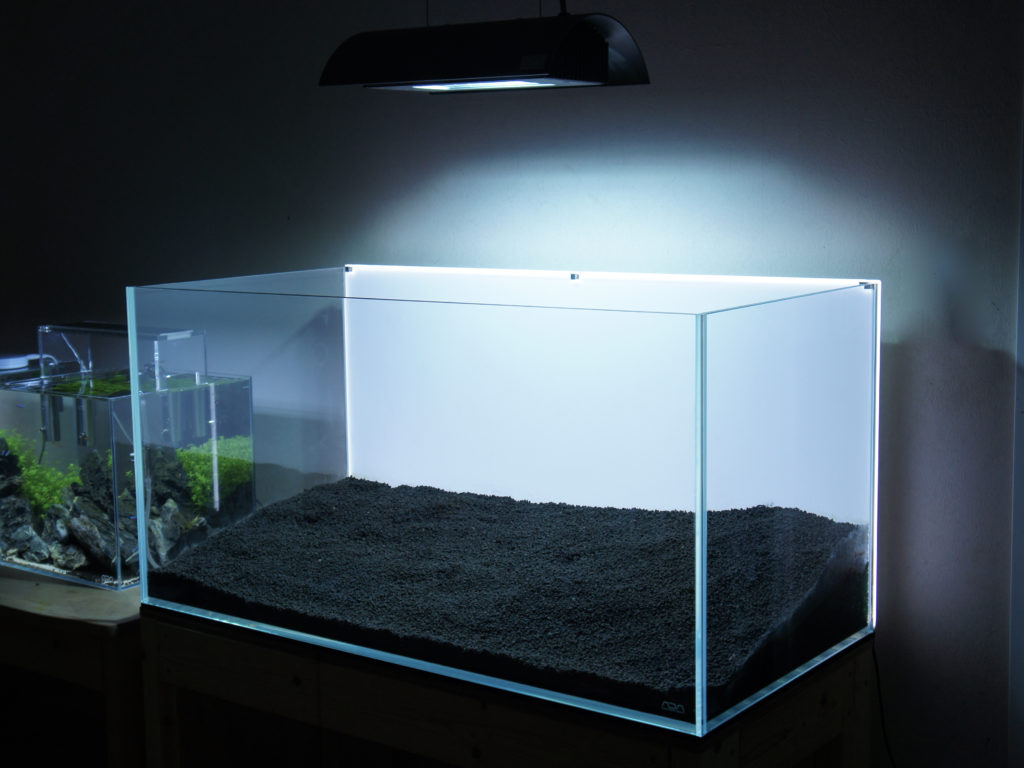
1. Size
The expression ‘small’ or ‘large’ may sound differently according to your point of view. So here is how this site determines the size of aquarium tanks.
| ‘Small’ | 45P(W45cm×D27cm×H30cm) or smaller |
| ‘Medium’ | 60P(W60cm×D30cm×H36cm) |
| ‘Large’ | 90P(W90cm×D45cm×H45cm) or larger |
Many beginners tend to think small tanks are easy to maintain. However, it isn’t always the case. Larger tanks can contain a large amount of water and the quality of water stays very stable. So the best way to decide which tank to purchase is to choose the largest tank you can place in your room.
On the other hand, if you are thinking of making an aquascape as a part of your interior decorations, large tanks are not always the best choice. It is said larger tanks are more stable and easy to maintain but it doesn’t mean you shouldn’t choose a small tank. Small tanks are totally capable of keeping fish and aquatic plants beautifully with appropriate equipment and maintenance.
2. Material
Many beautiful aquascapes are created in tanks made of glass. So I would say glass is the best material for aquascaping. One of the world’s most sophisticated aquarium tanks is the ‘Cube Garden Series’ made by ADA(Aqua Design Amano) a Japanese aquarium brand.
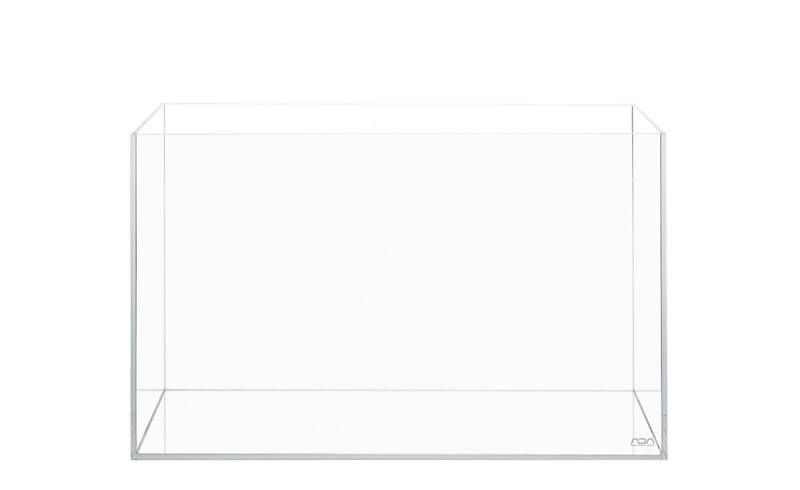
Step2. Substrate
1. Soil
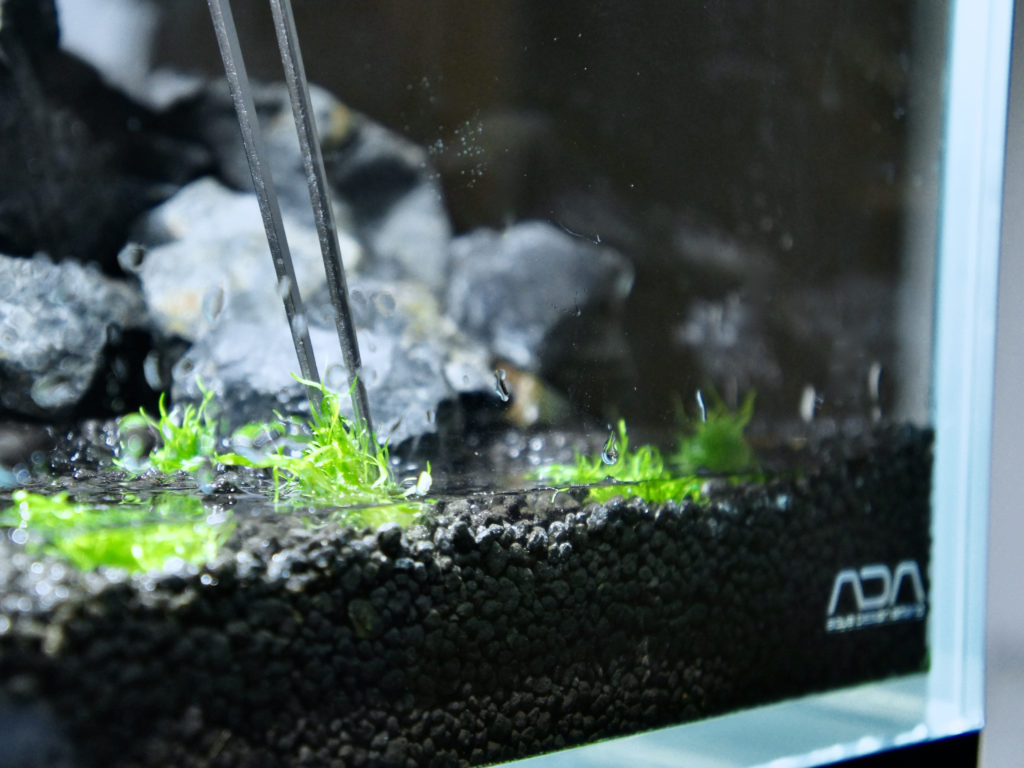
Aqua-soil is waterproof soil that contains enough nutrients for aquatic plants. Therefore it is the most recommended substrate for planted aquarium.
However, the disadvantage of soil is that it contains a large number of nutrients and in most cases, it is more than needed for young aquatic plants. This can cause algae to grow faster than aquatic plants. It is almost impossible to prevent algae to grow right after the setup, so you will need to spend at least a week getting rid of it. After that, the soil will stabilise the water, and make plants healthy. If this is your first time making an aquascape, I would strongly recommend choosing soil for the substrate.
2. Sand
Sand is often used in the foreground of the aquascape. It doesn’t contain nutrients at all, so usually, aqua soil is used in the background. The border of sand and soil is usually made of stones and driftwood. Some aquascapers glue them together to make sure there isn’t any space for soil to come out.
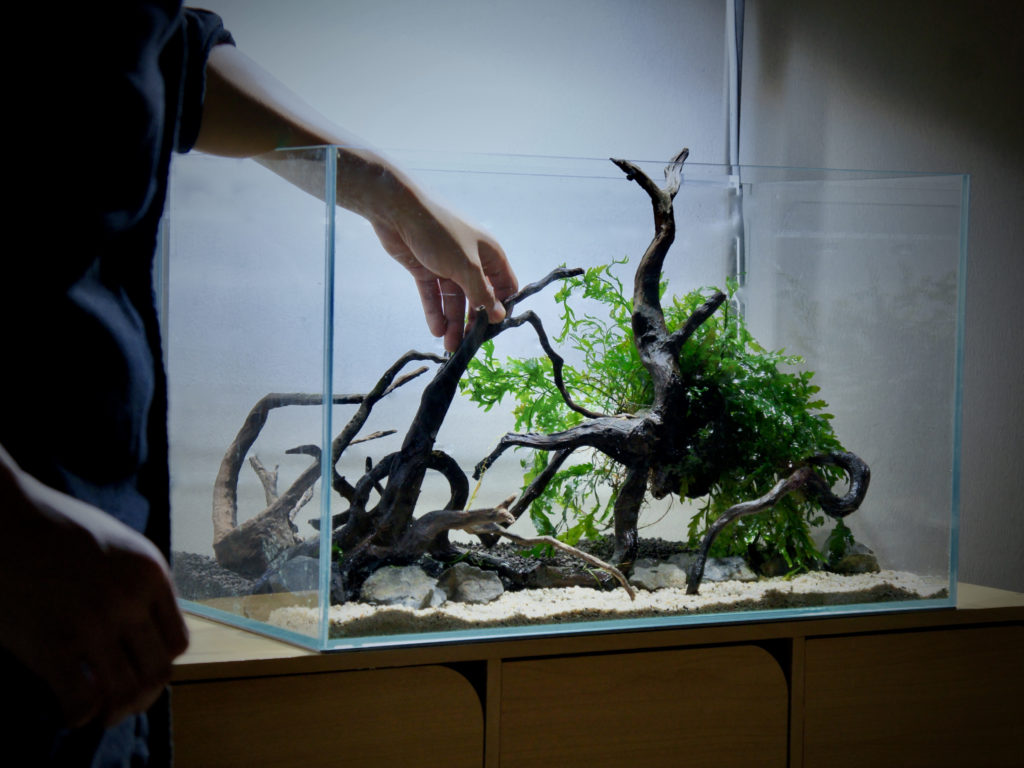
In some cases, you can use sand without soil in the back. Wabi-kusa(ADA) contains nutrients in the base, so all you need to do is to place it on the sand.
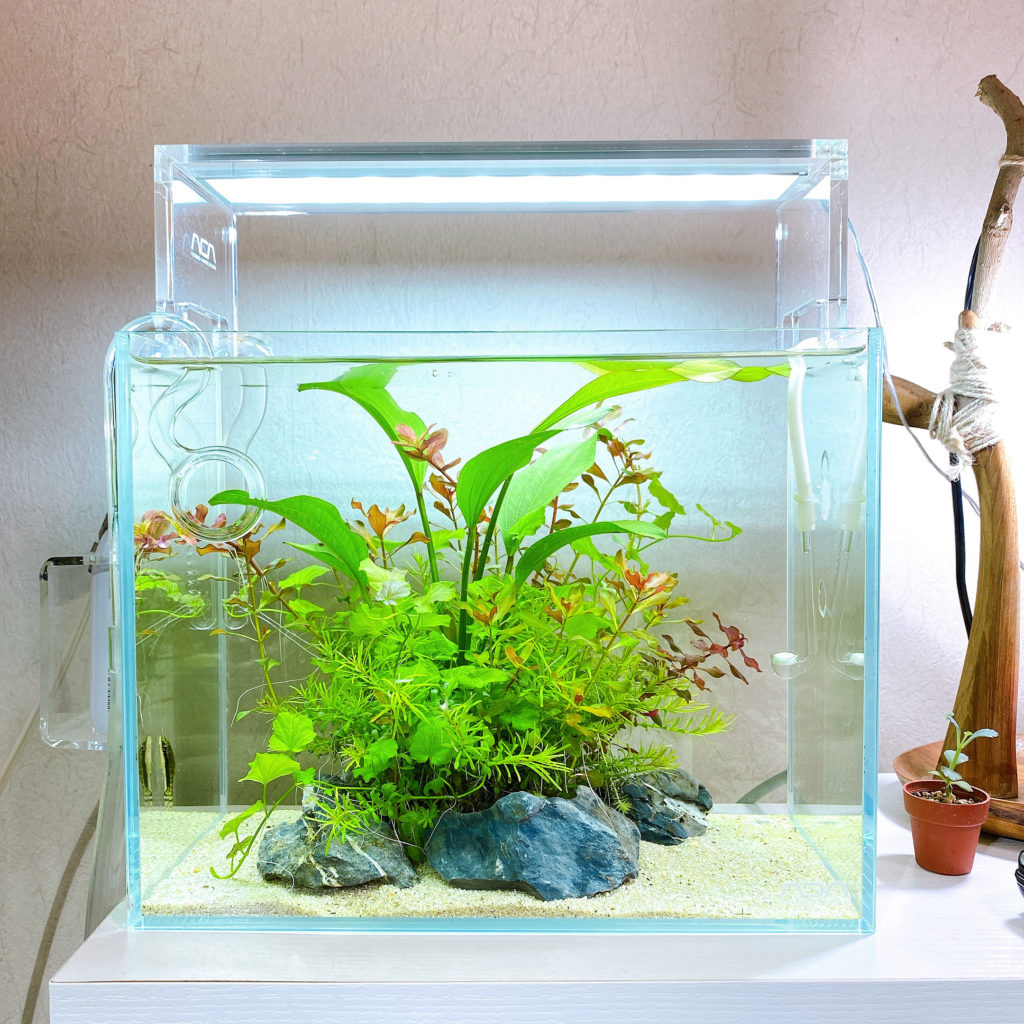
Step3. Layout Material
1. Driftwood
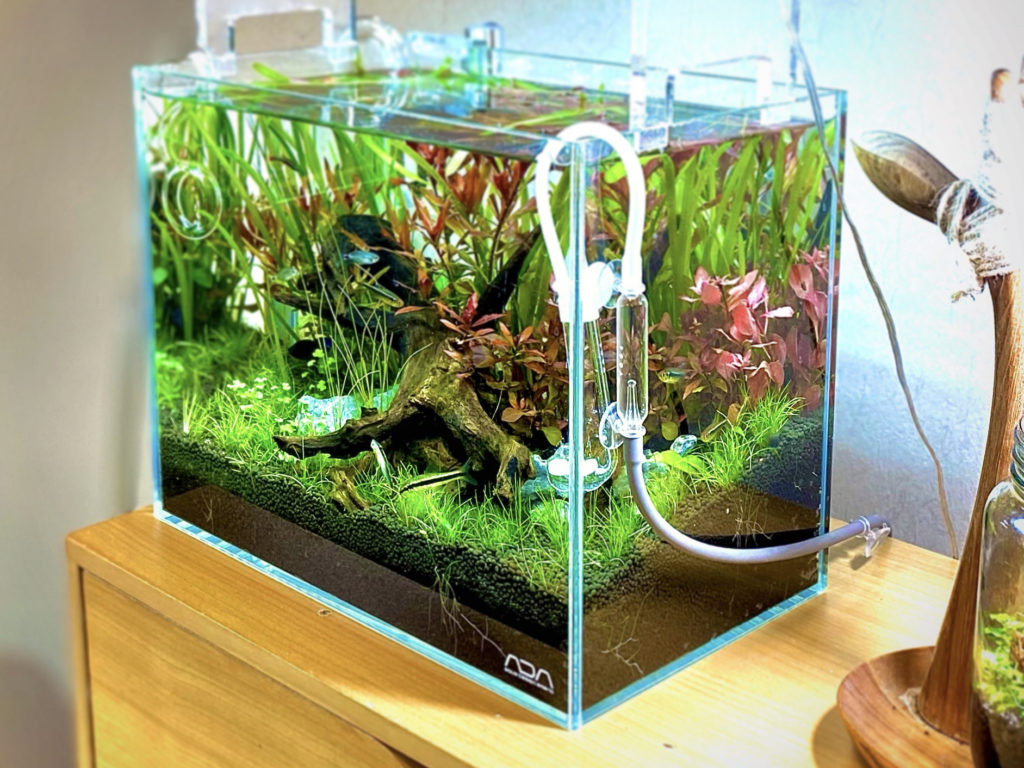
Driftwood is the most popular layout material. Most driftwoods sold at aquarium shops are safe to use in freshwater. You can easily create a good natural scape with driftwood.
2. Stones

3. Composition
There are three basic compositions of layout materials.
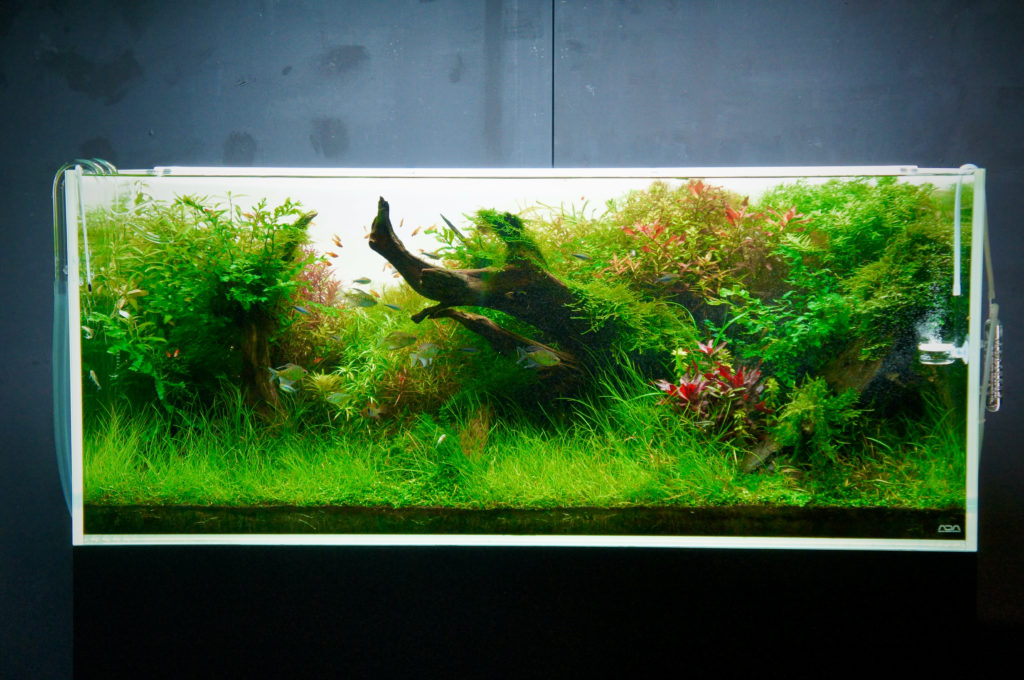
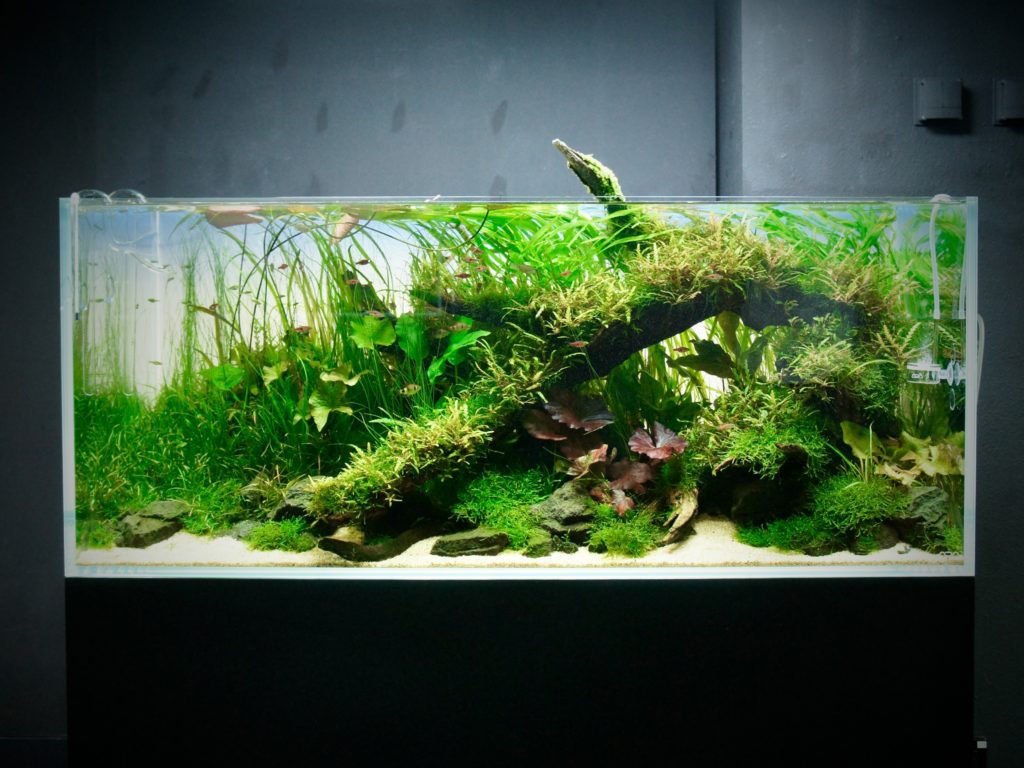
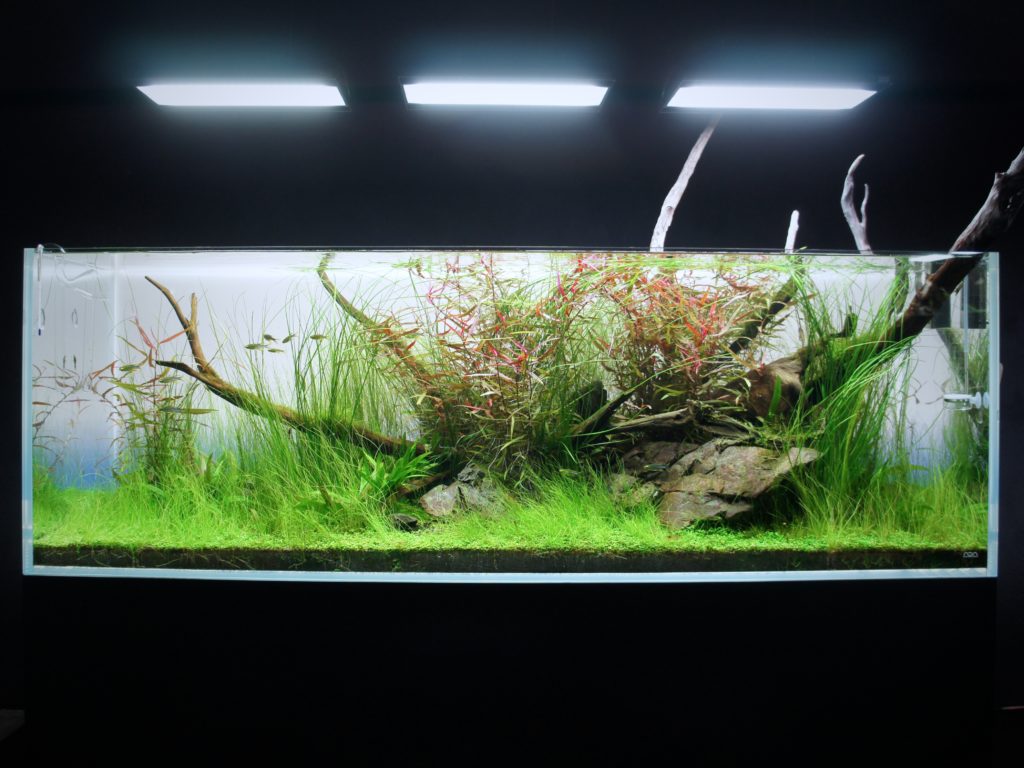
Step4. Planting
1. Foreground Plants
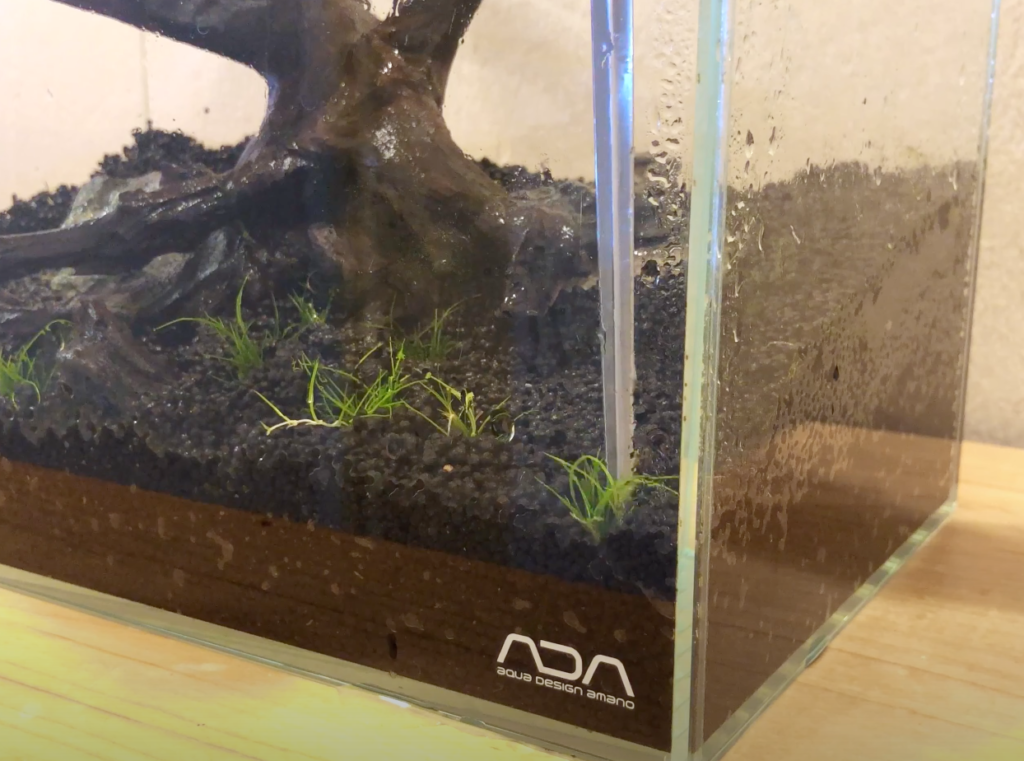
Pour a small amount of water so that the substrate is barely covered by the water. Then, plant some short plants in the foreground. Popular foreground aquatic plants are; Hemianthus callitrichoides ‘Cuba’, Micranthemum sp., Hydrocotyle tripartite, Riccia fluitans, Glossostigma elatinoides, Elatine hydropiper, Echinodorus tenellus, Eleocharis parvula, Utricularia graminifolia, Echinodorus tenellus var.broad leaf.
2. Mid-ground Plants
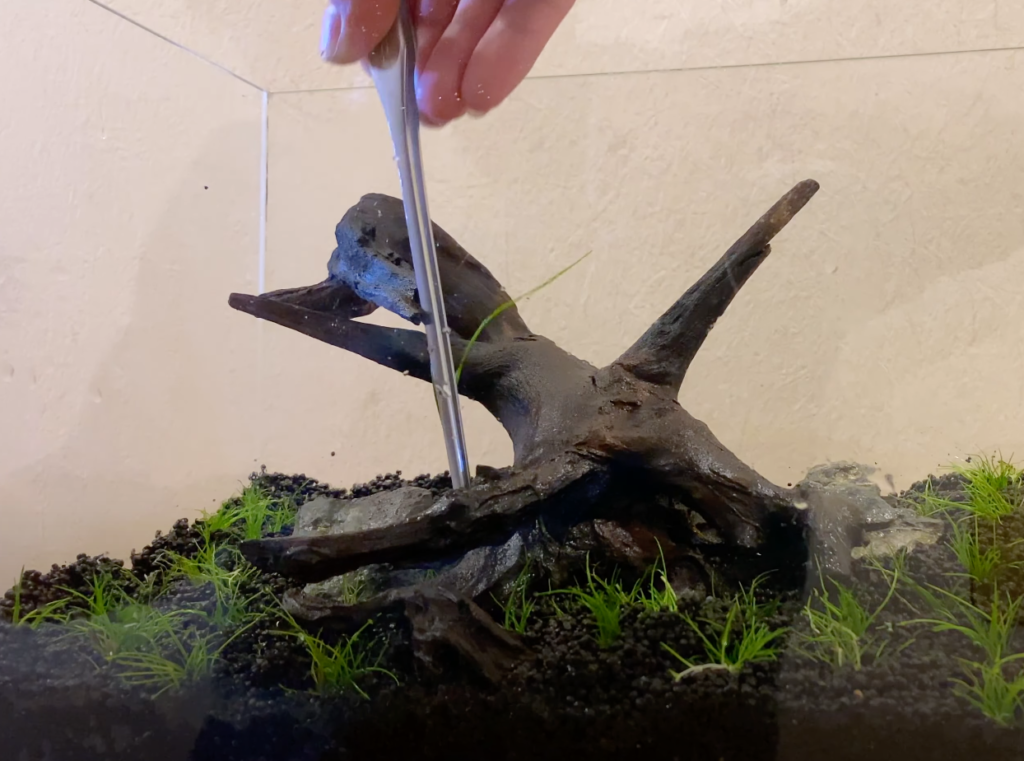
This is the most important part of the planting process. Mid-ground plants are planted between the foreground and the background. By choosing the right plants, the scape will look very natural. Popular mid-ground plants are; Cryptocoryne wendtii ‘Green’, Cryptocoryne axelrodi, Hydrocotyle verticillata, Staurogyne repens, Hemianthus micranthemoides, Scrophulariaceae limnophila sp., Anubias barteri var. nana ‘Petite’, Eleocharis acicularis.
Lastly, it’s time to plant the background plants. Pay attention to the shapes and colours of the leaves.
Step5. Maintenance
1. The First Week

After you have set up equipment such as CO2 injection, light, and filter, you will need to change half of the water every day. This is because young aquatic plants are not ready to take nutrients from the soil and water. Without the water change, your tank will soon become a heaven for the algae. The other purpose of changing the water every day for a week is to stimulate the aquatic plants and encourage them to grow quicker. You might find this a little busy, but once you have got through it, your water will become crystal clear!
2. The Final Scape
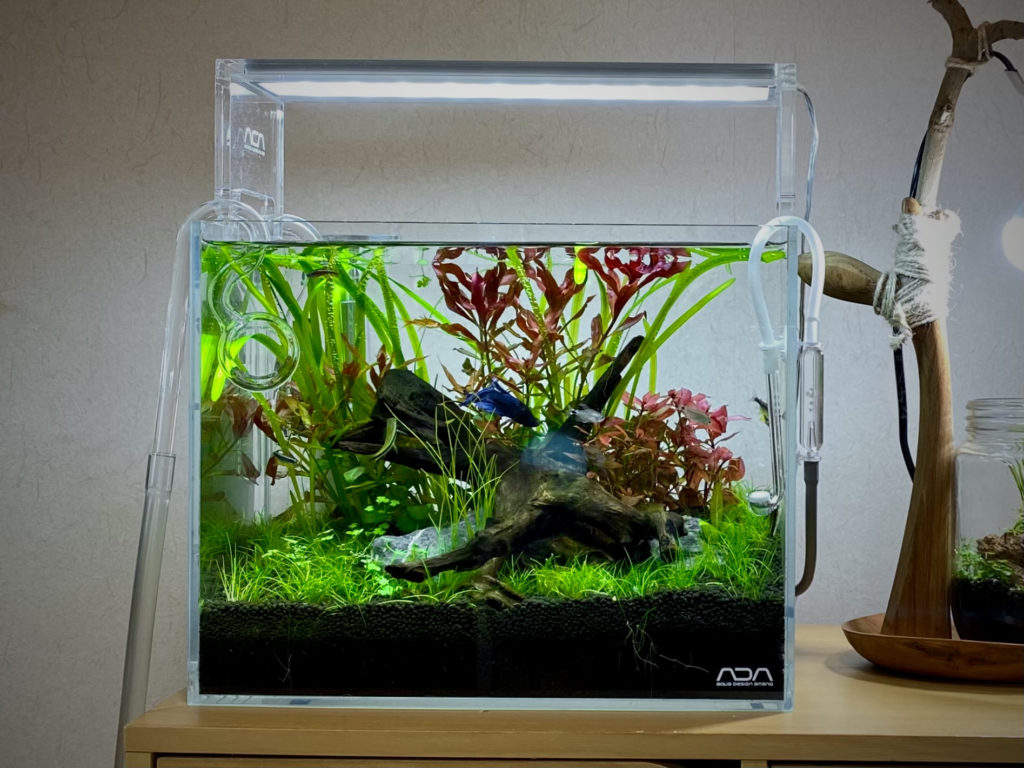
After a week from the setup, your tank will become ready to welcome some fish and shrimp. I would highly recommend you to purchase some Amano Shrimp to eliminate the algae. The ideal number of Amano Shrimp for a 60P tank is 20 to 30. And congratulations! The daily water change is no longer needed. The water is now stable enough. All you need to do is to change less than half of the water once a week.
In this article, I didn’t mention other equipment. If you want to learn more about aquarium light and canister filters, these articles below might be helpful.
Japanese Version of this article
